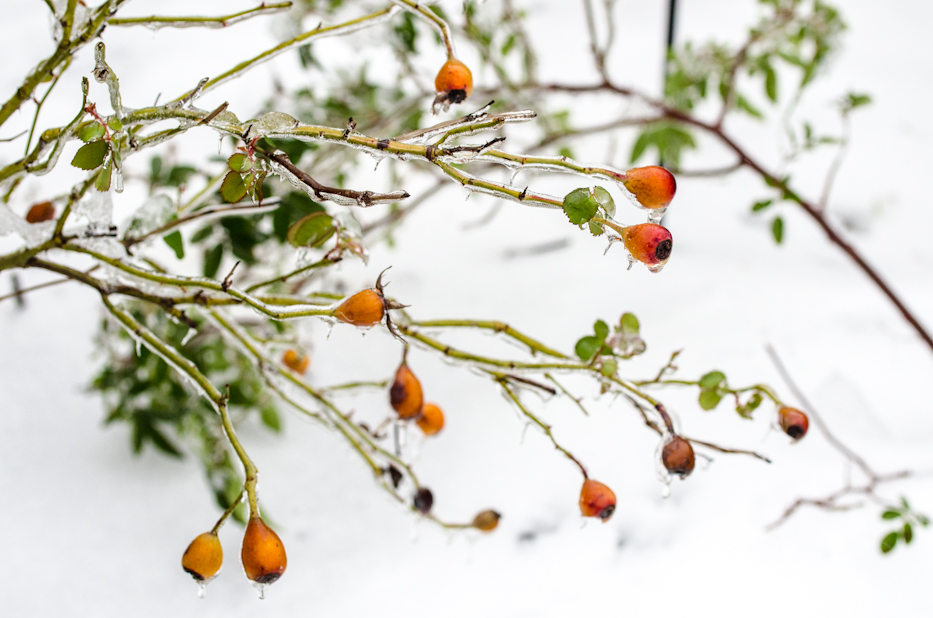 Ice-covered hips on ‘Reine Victoria’ Photo: Hedgerow Rose
Ice-covered hips on ‘Reine Victoria’ Photo: Hedgerow Rose
Newcomers to Western North Carolina often wonder how to get their roses ready for winter. They want to know how far to cut roses back and what winter protection is needed. The Asheville area is in hardiness Zone 7; some outlying areas or higher elevations are in 6b. This means that, for Zone 7, we may have temperatures as low as zero, and down to minus 5 in Zone 6b. But we rarely have temperatures that cold and, if we do, they don’t usually last long. In fact, our average January high in the Asheville area is in the mid-40s, and the average low is in the upper-20s.
Western North Carolina does get winds in the winter, however, and this is particularly true in the higher elevations. Winds can be strong enough to damage canes or even uproot roses.
With these facts in mind, here are some simple steps for putting your roses to bed.
- Fall is a good time to obtain a soil test. Many of our soils are acidic; lime takes time to work so many gardeners apply lime in the fall. A soil test will also tell you how to fertilize your roses in the spring. Soil test kits are available at your County Extension Office. In Buncombe County, the address is 49 Mt. Carmel Road, Asheville, 28806. Testing is free from April through November; there is a nominal fee during the other months.
- No matter how warm the fall, no matter what your soil test report, resist the urge to fertilize after mid-to late August.
- Remove dead, damaged, or dying canes as well as any that are crossing other canes and might rub.
- Clean up debris and dead leaves, especially if your roses are prone to black spot.
- Roses in this area can bloom into November. But usually by December they are going dormant and it is time to trim them back to 3 or 4 feet, depending on the type of rose. This light pruning will help prevent wind damage. Hard pruning and shaping of roses in this area is done in the early spring, traditionally when the forsythia blooms.
- Ground cover or short roses don’t need to be cut back.
- You do not want to cut back climbing roses to 3 or 4 feet but you may remove dead, unhealthy, or misdirected canes. Attach climbers firmly to their support so they will not blow or whip around.
- Own-root roses need routine mulching. If you already have several inches of mulch in your rose garden, you do not need to mulch again.
- Grafted roses will need the graft protected. You can tell if a rose is grafted as there is a thickening or knob at the junction of the root stock and graft. In this area, the graft site is usually slightly above ground level so it is easy to see. Cover the graft with a generous layer of soil and/or mulch.
- Container grown roses should be cleaned up and trimmed like other roses. If you have space, you can store them in your garage, place them against your house or in a sheltered spot. You can also leave them in place and hope they winter over successfully – this is the only option for very large containers that cannot be moved or if you have too many containers to relocate. Once these chores are done, you can settle back and wait for this winter’s Rose Catalogues!
Members of ABRRS are always happy to help with rose selection and care. Click HERE to learn about our current Events & Meetings. We’d love to talk roses with you!
About the Author:
Judy Deutsch is an American Rose Society Consulting Rosarian, Buncombe County Master Gardener and past President of Asheville Blue Ridge Rose Society.




